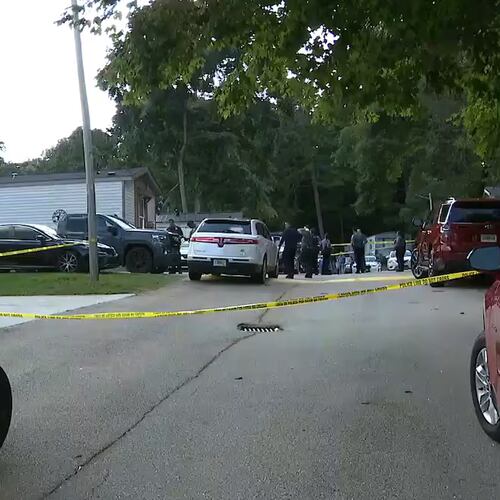Lisa Casanova is a microbiologist and environmental health professor who did her Ph.D. thesis on how long some coronaviruses survive on surfaces.
And every workday she commutes from her southeast Atlanta home to her Georgia State University job on MARTA, touching poles and railings with no visible concern about germs that might be lurking there. She hasn’t changed her habits since the new coronavirus emerged.
She doesn’t bother to retrieve the container of hand sanitizer in her bag after she plunks down in her bus seat or at any time during her 30-minute commute. Typically, she scrolls through emails on her phone, swiping fingers across the same screen that at some point will be pressed against her face. She guesses that maybe every couple days she uses cleaning wipes on the device.
She eventually washes her hands diligently about 20 minutes after getting to her lab, using a paper towel to turn off the water knobs, an Atlanta Journal-Constitution reporter observed this week after tagging along on the professor’s daily commute.
In the new era of COVID-19, Casanova’s transit trek in Atlanta is a reminder of the varying ways individuals —including ones with expertise in germs — assess their personal risk.
When she connects onto a full MARTA train, she doesn’t back away from other riders. “I may,” she concedes, “create distance from somebody if they really appear sick, especially if they have poor cough hygiene.”
Casanova doesn’t wear a mask, though she is trained in how to use them. Rather than taking out her fare card, what she presses against the turnstile sensor is her entire purse, which will end up on her kitchen table when she returns home. At no point in her trip does she yank down a sleeve to cover her hands or use her knuckles, elbows or the back of her hands instead of her fingers.
Her routine may shift as researchers learn more about COVID-19, Casanova acknowledged, but “I will probably keep doing what I’m doing.”
José Cordero, who heads the University of Georgia’s Epidemiology and Biostatistics Department, said that Casanova’s overall routine is logical and generally would mirror his current habits if he went on public transit.
Casanova tells people to focus on guidance from the Centers for Disease Control and Prevention.
The new coronavirus, a cousin to earlier ones, causes a respiratory disease. To help prevent the spread of such diseases, the CDC recommends cleaning and disinfecting frequently touched objects and surfaces, washing hands with soap and water for at least 20 seconds, avoiding close contact with people who are sick, avoiding touching your eyes, nose and mouth, staying home if sick and covering your cough or sneeze with a tissue.
People who are older or in poor health are thought to be more at risk of suffering severe symptoms. So far, most people who get COVID-19 are not expected to need care from a doctor, experts say.
According to the CDC, "it may be possible that a person can get COVID-19 by touching a surface or object that has the virus on it and then touching their own mouth, nose, or possibly their eyes, but this is not thought to be the main way the virus spreads."
The CDC says the coronavirus appears to be mainly spread person-to-person, particularly between those in close contact and within about six feet. The belief is that the virus is passed through respiratory droplets when a person coughs or sneezes and the droplets either land in the mouths or noses of nearby people or are inhaled into lungs. People are thought to be most contagious when they have the most symptoms.
MARTA said earlier this week it "will continue to thoroughly clean its facilities, rail stations, buses and trains, with a focus on high touch areas such as handrails, elevator buttons, escalators, and Breeze machines."
For now, Casanova says, she has more concern about those surfaces in places where there tend to be people with infectious diseases, such as in hospitals or childcare settings. There, she says, she would be extra diligent about hand washing and using disinfectants and wouldn’t touch her phone until she knew her hands were clean.
Some of her colleagues are more worried about everyday surfaces than she is, she says. But “if you question a lot of microbiologists, I don’t think you are going to find a lot of germaphobes.”
In her Ph.D. studies about 12 years ago, she found that other versions of coronaviruses typically lasted a couple days on surfaces. Temperature and humidity affected their survival — they do better in cold — and they tend to linger longer on hard surfaces than soft ones, she says.
Viruses and bacteria are everywhere, Casanova says. But she suspects driving in the rain to work would be more risky for her than the potential for picking up an infectious disease on MARTA.
She still shakes hands with people. But concern about germs does factor into her life: She refuses to eat raw oysters and washes her hands often and thoroughly.
She says she gets the flu vaccine and when she is sick she avoids going to work or being in public places. She demands the same of students in her lab.
If the number of COVID-19 cases here grows, she says, “I think we need to think not just about things like should I wear a mask — which is not recommended — or when should I wash hands or touch faces, but how do we make it possible for people not to come to work sick and how do we make sure health care workers are protected.”
About the Author
Keep Reading
The Latest
Featured





